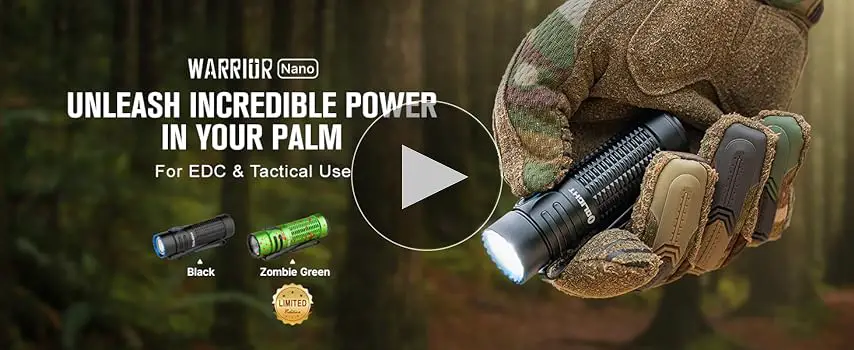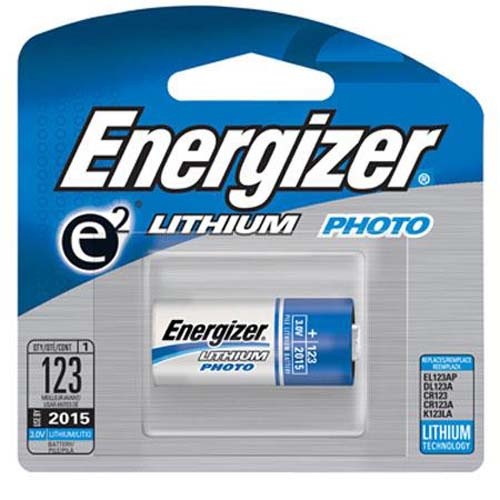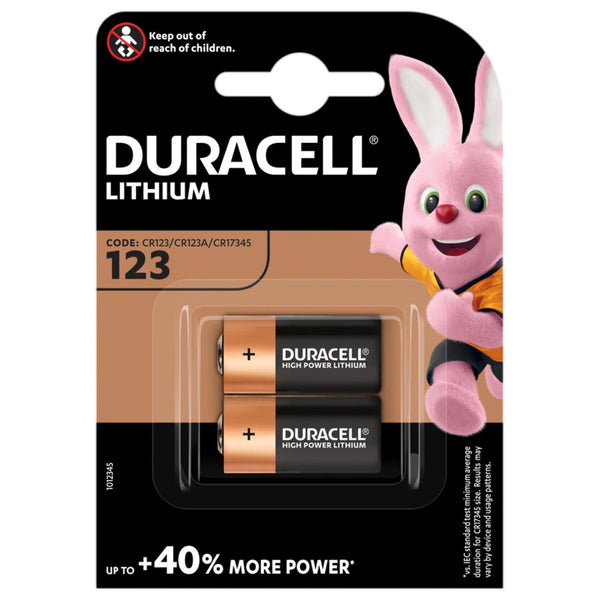123 batteries have a round shape, while 123A batteries are the same size but have a more squared shape. Both types are commonly used in devices like flashlights, cameras, and medical equipment.
The choice between the two usually depends on the specific requirements of the device and its compatibility with either battery type. 123 and 123A batteries may seem similar due to their size, but they have key differences that can affect their performance in certain devices.
Understanding the distinctions between these two types of batteries is essential for choosing the right one for your equipment. Let’s delve deeper into their specific features, uses, and benefits, so you can make an informed decision when selecting the appropriate battery for your needs.

The Basics Of Batteries
Different Battery Types
Batteries come in various types, such as 123 and 123A. Each type has its own specifications and uses.
- 123 Batteries: Commonly used in small electronics like calculators and watches.
- 123A Batteries: Often used in high-drain devices like flashlights and digital cameras.
Importance Of Battery Choice
Selecting the right battery is crucial for optimal device performance and longevity.
- Choosing the correct battery type ensures compatibility and efficiency.
- A mismatched battery can damage the device and lead to malfunctions.
Comparing 123 And 123a Batteries
When comparing 123 and 123A batteries, the main difference lies in their size and voltage. The 123 battery is larger and has a higher voltage, making it suitable for powering high-drain devices. On the other hand, the 123A is smaller and better suited for compact electronics.
Physical Dimensions
123 and 123A batteries differ in physical size, where 123A is slightly shorter and has a larger diameter.
Voltage Output
123 batteries typically provide a voltage output of 3 volts, while 123A batteries offer a stable voltage output of 3.2 volts.
Chemical Composition
123 and 123A batteries vary in their chemical composition, with 123 batteries using lithium iron disulfide and 123A batteries containing lithium manganese dioxide.
Application And Usage
123 and 123A batteries are often used interchangeably, but understanding their different applications can be crucial for getting the best performance out of your devices. Let’s explore their specific uses to ensure you’re using the right battery for the right application.
Common Devices
123 batteries are commonly found in household devices such as cameras, flashlights, electronic locks, and remote controls. Their compact size and reliable power make them a popular choice for everyday electronics.
Specialized Applications
In contrast, 123A batteries are often favored for high-drain devices like tactical flashlights, weapon lights, and electronic dog collars. Their ability to sustain high power demands makes them ideal for specialized equipment where reliability is paramount.
Performance And Longevity
123 batteries offer superior performance and longevity compared to 123A batteries. With longer-lasting power and reliability, 123 batteries are the ideal choice for various devices and applications.
When it comes to choosing the right battery for your devices, 123 and 123A batteries are popular options. While both are commonly used in cameras, flashlights, and other electronic devices, understanding the differences in performance and longevity is essential for making an informed decision.
Capacity And Discharge Rate
Capacity and discharge rate are crucial factors to consider when comparing 123 and 123A batteries.
- Capacity: The capacity of a battery refers to the amount of energy it can store. In this aspect, 123A batteries offer a higher capacity compared to traditional 123 batteries, providing longer-lasting power for your devices. This makes 123A batteries a preferred choice for high-drain devices that require a constant supply of energy.
- Discharge Rate: The discharge rate measures how quickly a battery’s energy is depleted. 123A batteries have a lower discharge rate, meaning they can sustain power delivery for a longer period of time. This makes them ideal for devices that require consistent performance over extended periods, such as digital cameras used during events or outdoor adventures.
Shelf Life
The shelf life of a battery is an important consideration, especially if you don’t frequently use the device it powers.
- 123 Batteries: These batteries have a longer shelf life compared to 123A batteries. If you have devices that are not used frequently or have prolonged periods of inactivity, opting for 123 batteries can ensure they remain ready for use when needed without the need for frequent replacements.
- 123A Batteries: While 123A batteries may have a slightly shorter shelf life, they make up for it with their superior performance and discharge rate. If you have devices that require constant usage or have a high energy demand, these batteries are the ideal choice to ensure optimal performance.
In summary, the choice between 123 and 123A batteries ultimately depends on the specific needs of your devices. If capacity, discharge rate, and longevity are your primary concerns, 123A batteries are recommended for their superior performance and sustained power delivery. However, if a longer shelf life is more important for devices that aren’t frequently used, 123 batteries provide a reliable option. Evaluate your device requirements and prioritize accordingly to make the best choice for your electronic devices.
Cost And Availability
When it comes to choosing the right battery for your device, cost and availability are important factors to consider. In this section, we will compare the pricing and accessibility of 123 and 123A batteries to help you make an informed decision.
Pricing Comparison
Before purchasing batteries, it is essential to understand the cost implications of each option. Here is a breakdown of the pricing for 123 and 123A batteries:
| Battery Type | Pricing |
|---|---|
| 123 Batteries | Starting from $X.XX for a pack of XX |
| 123A Batteries | Starting from $X.XX for a pack of XX |
As you can see, both battery types are available at varying price points. It is crucial to consider your budget and evaluate whether the higher price of one type offers additional benefits.
Accessibility
When it comes to accessibility, it is necessary to understand the availability of 123 and 123A batteries in the market. Here are some key points to consider:
- 123 batteries are widely available in electronic stores, supermarkets, and online marketplaces.
- 123A batteries, while slightly less common, can still be found in specialized electronic stores and online retailers.
Although 123 batteries are generally more accessible, it is important to note that the availability of both types may vary depending on your location. Before making a purchase, it is recommended to check local stores or reputable online platforms for availability.

Credit: www.amazon.com
Environmental Impact
When it comes to understanding the environmental impact of 123 vs 123A batteries, it’s important to consider the sustainability and recycling options of these common household power sources.
Sustainability
Both 123 and 123A batteries have a similar environmental impact in terms of sustainability. The production process of these batteries involves the use of non-renewable resources, such as metals and chemicals, contributing to environmental depletion.
Moreover, the widespread use of these batteries leads to a higher demand for these resources, further straining the environment.
Recycling Options
Proper recycling of 123 and 123A batteries is crucial for minimizing their environmental impact. Batteries contain toxic metals, including mercury, cadmium, and lead, which can pose serious risks if not disposed of properly.
Many local recycling facilities accept these types of batteries, allowing for safe disposal and the recovery of valuable metals. It’s vital to ensure that these batteries are recycled to prevent the release of hazardous substances into the environment.
Making An Informed Decision
When it comes to choosing between 123 and 123A batteries, making an informed decision is crucial. Each type has its own strengths and weaknesses, so it’s essential to consider your specific needs before selecting the right battery for your device.
Considerations For Different Needs
Before you decide between 123 and 123A batteries, think about your device’s power requirements. Consider the size, voltage, and shelf life needed for optimal performance.
Best Practices
- Always check the manufacturer’s recommendations for battery type.
- Store batteries in a cool, dry place to extend their lifespan.
- Avoid mixing old and new batteries to prevent damage to your device.

Credit: www.lookingglassphoto.com
Conclusion And Future Trends
Battery technology is constantly evolving, leading to the development of more efficient and powerful batteries. A comparison between 123 and 123A batteries reveals important differences in their performance and applications. Understanding these distinctions is crucial for consumers looking for reliable power sources. Now, let’s delve into the Conclusion and Future Trends of battery technology.
Advancements In Battery Technology
Recent advancements in battery technology have focused on enhancing energy density, lifespan, and rechargeability. Manufacturers are investing in research to create batteries that are more eco-friendly and cost-effective. These developments are shaping the future of portable power sources.
Closing Thoughts
When choosing between 123 and 123A batteries, consider your specific needs and intended use. Keep an eye on emerging battery technologies that offer improved performance and sustainability. As the demand for portable power continues to grow, innovation in battery technology will play a crucial role in meeting these needs.

Credit: www.batteries1st.co.uk
Frequently Asked Questions On 123 Vs 123a Batteries
What Is The Difference Between 123 And 123a Batteries?
123 and 123A batteries may have slight differences in shape and voltage. The 123A battery is a popular lithium battery with a voltage of 3. 0V, while the 123 battery usually refers to a 3. 6V lithium-ion battery. Make sure to check your device’s requirements before purchasing to ensure compatibility.
Can I Replace A 123 Battery With A 123a Battery?
In most cases, you can replace a 123 battery with a 123A battery. Both batteries have similar sizes and can fit into the same devices. However, due to the voltage difference, the runtime and performance might slightly vary. It’s always recommended to consult your device’s manual or contact the manufacturer for compatibility information.
Which Battery Lasts Longer, 123 Or 123a?
In general, the 123A battery tends to last longer than a 123 battery. The 123A battery has a higher capacity and a stable discharge curve, offering extended runtime. However, the actual battery life depends on various factors, such as the device’s power consumption and usage patterns.
Are 123 And 123a Batteries Rechargeable?
No, neither the 123 nor the 123A batteries are typically rechargeable. They are commonly used as disposable batteries. If you require rechargeable options, consider looking for different battery chemistries, such as lithium-ion, nickel-metal hydride (NiMH), or nickel-cadmium (NiCd).
Conclusion
Choosing between 123 and 123A batteries depends on your specific needs. While 123 batteries are versatile and widely used, 123A batteries offer higher voltage and longer shelf life. Understanding the differences and knowing your device’s requirements will help you make the right choice for your applications.